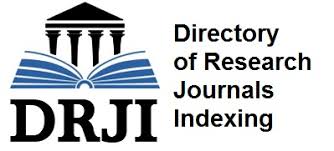Digital Dependency Nomophobia and Smartphone Addiction among Community Healthcare Professionals
Keywords:
Community health workers, healthcare providers, internet addiction, psychosocial aspect, smartphone addictions, nomophobic behaviorsAbstract
Background of the study: Nomo phobia (NMP) – fear of being without mobile phone, is a rising concern in today’s digital age. This psychological disorder driven by excessive use of digital media is impacting the younger generation, leading to symptoms such as anxiety, nervousness and panic attacks. In 2019, global smartphone users reached 2.5 billion, with evidence showing its increasing effects on daily life. This study aims to identify the prevalence and correlation of NMP and smartphone addiction among Community healthcare professionals.
Methodology: This cross-sectional study was conducted to assess Nomo phobia and smart phone addiction among 389 participants using the NMP questionnaire and the SAS-SV questionnaire. Participants were included in this study using convenience sampling technique and after evaluating the designed inclusion and exclusion criteria, consent form was obtained for enrollment. For data collection, NMP questionnaire and SAS-SV questionnaire were used. The data was analyzed using descriptive (means, SD & percentage) and inferential statistics (Pearson Correlation analysis) at the significance level of p<0.05 using SPSS (version 22).
Results: Findings showed that out of 389 participants, 229 (58.9%) exhibited severe nomophobia, while 319 (35.90%) showed moderate levels of smart pone addiction. The average age of participants was 27.81 years. The statistical analysis revealed a significant correlation (r = 0.52, P = 0.01) between nomophobia and smart phone addiction among healthcare professionals.
Conclusions: The extensive use of smart phones among healthcare professionals may lead to addiction and significant levels of nomophobia. It is crucial to conduct further research to explore preventive strategies for nomophobia and smartphone addiction across diverse populations. Comprehensive studies should be undertaken throughout Pakistan, engaging various subspecialties, to gain a deeper understanding of this issue and its implication for Community healthcare professionals.
References
1. Ahmed, S., Pokhrel, N., Roy, S., & Samuel, A. J. (2019). Impact of nomophobia: A nondrug addiction among students of physiotherapy course using an online cross-sectional survey. PubMed, 61(1), 77–80. https://doi.org/10.4103/psychiatry.indianjpsychiatry_361_18
2. Anshari, M., Alas, Y., & Sulaiman, E. (2019). Smartphone addictions and nomophobia among youth. Vulnerable Children and Youth Studies, 14(3), 242–247. https://doi.org/10.1080/17450128.2019.1614709
3. Arpaci, I., Baloğlu, M., & Kesici, Ş. (2017). A multi-group analysis of the effects of individual differences in mindfulness on nomophobia. Information Development, 35(2), 333–341. https://doi.org/10.1177/0266666917745350
4. Bhattacherjee, S., Dasgupta, P., Dasgupta, S., Roy, J., Mukherjee, A., & Biswas, R. (2017). Nomophobic behaviors among smartphone using medical and engineering students in two colleges of West Bengal. Indian Journal of Public Health, 61(3), 199. https://doi.org/10.4103/ijph.ijph_81_16
5. Boumosleh, J. M., & Jaalouk, D. (2017). Depression, anxiety, and smartphone addiction in university students- A cross sectional study. PLoS ONE, 12(8), e0182239. https://doi.org/10.1371/journal.pone.0182239
6. Bragazzi, N. L., Re, T. S., & Zerbetto, R. (2019). The relationship between nomophobia and maladaptive coping styles in a sample of Italian young adults: Insights and Implications from a Cross-Sectional study. JMIR Mental Health, 6(4), e13154. https://doi.org/10.2196/13154
7. Busch, P. A., & McCarthy, S. (2020). Antecedents and consequences of problematic smartphone use: A systematic literature review of an emerging research area. Computers in Human Behavior, 114, 106414. https://doi.org/10.1016/j.chb.2020.106414
8. Gore, S., Balasubramanian, S., & Paris, C. M. (2019). Antecedents and outcomes of smartphone usage among Indian millennial travellers. In Information and Communication Technologies in Tourism 2019: Proceedings of the International Conference in Nicosia, Cyprus, January 30–February 1, 2019 (pp. 423-434). Springer International Publishing. https://doi.org/10.1007/978-3-030-05940-8_33
9. Hamutoglu, N. B., Gezgin, D. M., Sezen-Gultekin, G., & Gemikonakli, O. (2018). Relationship between nomophobia and fear of missing out among Turkish university students. Cypriot Journal of Educational Sciences, 13(4), 549–561. https://doi.org/10.18844/cjes.v13i4.3464
10. Haug, S., Castro, R. P., Kwon, M., Filler, A., Kowatsch, T., & Schaub, M. P. (2015). Smartphone use and smartphone addiction among young people in Switzerland. Journal of Behavioral Addictions, 4(4), 299–307. https://doi.org/10.1556/2006.4.2015.037
11. Jahrami, H., Abdelaziz, A., Binsanad, L., Alhaj, O. A., Buheji, M., Bragazzi, N. L., Saif, Z., BaHammam, A. S., & Vitiello, M. V. (2021). The Association between Symptoms of Nomophobia, Insomnia and Food Addiction among Young Adults: Findings of an Exploratory Cross-Sectional Survey. International Journal of Environmental Research and Public Health, 18(2), 711. https://doi.org/10.3390/ijerph18020711
12. Keles, B., McCrae, N., & Grealish, A. (2019). A systematic review: the influence of social media on depression, anxiety and psychological distress in adolescents. International Journal of Adolescence and Youth, 25(1), 79–93. https://doi.org/10.1080/02673843.2019.1590851
13. Kim, H., Min, J., Min, K., Lee, T., & Yoo, S. (2018). Relationship among family environment, self-control, friendship quality, and adolescents’ smartphone addiction in South Korea: Findings from nationwide data. PLoS ONE, 13(2), e0190896. https://doi.org/10.1371/journal.pone.0190896
14. Mb, P., Madhukumar, S., & Ts, M. M. (2015). A study on nomophobia - mobile phone dependence, among students of a medical college in Bangalore -. National Journal of Community Medicine, 6(3), 340–344. https://www.bibliomed.org/?mno=218500
15. Moattari, M., Moattari, F., Kaka, G., Kouchesfahani, H. M., Sadraie, S. H., & Naghdi, M. (2017). Smartphone addiction, sleep quality and mechanism. Int J Cogn Behav, 1(002).
16. Nikolic, A., Bukurov, B., Kocic, I., Vukovic, M., Ladjevic, N., Vrhovac, M., Pavlović, Z., Grujicic, J., Kisic, D., & Sipetic, S. (2023). Smartphone addiction, sleep quality, depression, anxiety, and stress among medical students. Frontiers in Public Health, 11. https://doi.org/10.3389/fpubh.2023.1252371
17. Oviedo-Trespalacios, O., Nandavar, S., Newton, J. D. A., Demant, D., & Phillips, J. G. (2019). Problematic use of mobile phones in Australia. . .Is it getting worse? Frontiers in Psychiatry, 10. https://doi.org/10.3389/fpsyt.2019.00105
18. Panova, T., & Carbonell, X. (2018). Is smartphone addiction really an addiction? Journal of Behavioral Addictions, 7(2), 252–259. https://doi.org/10.1556/2006.7.2018.49
19. Prasad, M. (2017). Nomophobia: a cross-sectional study to assess mobile phone usage among dental students. JOURNAL OF CLINICAL AND DIAGNOSTIC RESEARCH. https://doi.org/10.7860/jcdr/2017/20858.9341
20. Shah, P. P., & Sheth, M. S. (2018). Correlation of smartphone use addiction with text neck syndrome and SMS thumb in physiotherapy students. International Journal of Community Medicine and Public Health, 5(6), 2512. https://doi.org/10.18203/2394-6040.ijcmph20182187
21. Yildirim, C., & Correia, A. (2015). Exploring the dimensions of nomophobia: Development and validation of a self-reported questionnaire. Computers in Human Behavior, 49, 130–137. https://doi.org/10.1016/j.chb.2015.02.059
Downloads
Published
Data Availability Statement
The datasets generated and/or analyzed during the current study are available from the corresponding author upon reasonable request.
Issue
Section
License
Copyright (c) 2024 Archives of Management and Social Sciences

This work is licensed under a Creative Commons Attribution 4.0 International License.








